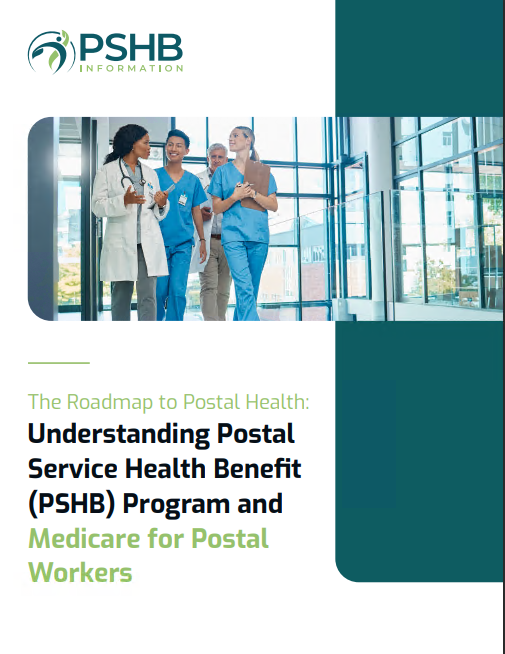Key Takeaways
-
The PSHB program offers tailored health benefits for postal workers, ensuring comprehensive coverage and unique advantages compared to previous plans.
-
Understanding PSHB enrollment, integration with Medicare, and cost-saving strategies empowers you to make smarter health plan choices for 2025.
Welcome to a New Era of Postal Worker Health Benefits
As a postal worker, your health coverage has undergone a significant transformation with the Postal Service Health Benefits (PSHB) program. This change marks the transition from the Federal Employees Health Benefits (FEHB) system to a tailored program designed specifically for you. The PSHB program brings unique features, benefits, and requirements—all of which play a critical role in your health plan decisions.
If you’re navigating this new landscape, understanding the key updates and choices for 2025 will help you secure the best possible health coverage for yourself and your family.
Enrollment: What You Need to Know
Automatic Enrollment
If you previously had FEHB coverage, you are automatically enrolled in a comparable PSHB plan. However, automatic enrollment doesn’t guarantee that your plan is the best fit for your needs. Reviewing your coverage and exploring alternatives ensures you’re making the most informed decision.
Open Season Changes
The Open Season for PSHB ran from November 11 to December 13, 2024, allowing you to switch plans, add family members, or adjust your coverage. Changes made during this time take effect on January 1, 2025. If you missed the Open Season, modifications are only allowed if you experience a Qualifying Life Event (QLE), such as marriage, divorce, or the birth of a child.
Special Enrollment for Medicare-Eligible Retirees
If you or your family members are Medicare-eligible, enrollment requirements differ. Understanding how PSHB integrates with Medicare is vital to avoid penalties or coverage gaps.
PSHB and Medicare: A Seamless Partnership
Medicare Part B Enrollment Requirements
Medicare-eligible retirees and their family members must enroll in Medicare Part B to maintain PSHB coverage unless they fall under specific exemptions. These include retirees who were already receiving FEHB coverage and were aged 64 or older as of January 1, 2025.
Enhanced Coverage with Medicare
When paired with Medicare, many PSHB plans offer added benefits, such as Part B premium reimbursements or reduced out-of-pocket costs. Additionally, prescription drug coverage is automatically included through a Medicare Part D Employer Group Waiver Plan (EGWP). This integration eliminates the “donut hole” and caps annual out-of-pocket drug expenses at $2,000.
Maximizing Benefits
To get the most out of your PSHB plan, ensure your healthcare providers accept Medicare. This allows you to enjoy comprehensive coverage while minimizing costs. Coordinating your benefits effectively reduces surprises and helps you plan for your healthcare expenses.
Understanding Costs: A Breakdown
General Costs
Your PSHB premiums depend on factors such as plan choice, family size, and Medicare enrollment. For 2025, premiums remain competitive, reflecting the government’s contribution toward your coverage.
Deductibles and Out-of-Pocket Expenses
While deductibles vary by plan, you’ll want to choose an option that aligns with your anticipated healthcare needs. Out-of-pocket expenses are manageable, especially if you’re enrolled in Medicare, thanks to the $2,000 cap on prescription drug costs and waived deductibles in certain scenarios.
Cost-Saving Tips
-
Compare Plans: Use the PSHB comparison tools to evaluate premiums, deductibles, and coverage levels.
-
Consider Your Healthcare Usage: If you anticipate high medical costs, a plan with lower out-of-pocket maximums might be advantageous.
-
Leverage Preventive Services: Many plans offer free preventive care, helping you stay healthy without additional expenses.
Supplemental Benefits: Beyond Basic Coverage
Vision, Dental, and Hearing Care
PSHB plans continue to offer robust supplemental benefits, including vision, dental, and hearing coverage. These services often cover routine check-ups, glasses, and hearing aids—important for maintaining your overall well-being.
Wellness Programs
Take advantage of wellness initiatives designed to support your health. These may include discounts on fitness memberships, smoking cessation programs, or nutrition counseling.
Key Deadlines and Reminders
Staying on top of critical deadlines ensures you don’t miss out on valuable benefits:
-
Annual Notice of Change (ANOC): Review your plan’s ANOC to understand updates to premiums, deductibles, and benefits.
-
Open Season: Mark your calendar for next year’s Open Season, which runs from mid-November to mid-December. This is your opportunity to reassess your coverage and make changes.
Addressing Common Questions
What if I Don’t Enroll in Medicare Part B?
If you’re required to enroll in Medicare Part B but fail to do so, you risk losing your PSHB coverage. Exceptions apply for certain groups, but it’s essential to confirm your status to avoid complications.
Can I Keep My Current Providers?
Most PSHB plans offer extensive provider networks, and those paired with Medicare ensure you have access to a wide range of healthcare professionals. Check with your plan to verify your providers’ participation.
What Happens During Qualifying Life Events?
QLEs allow you to make changes outside of Open Season. These include adding dependents, switching plans, or canceling coverage. Be sure to notify your plan administrator promptly after a QLE to adjust your benefits.
Why PSHB Is a Game-Changer
Tailored for Postal Workers
Unlike the FEHB program, PSHB is specifically designed to meet the unique needs of postal workers and retirees. This focus ensures better alignment with your lifestyle and career.
Comprehensive Coverage
From preventive care to specialized treatments, PSHB plans provide extensive benefits that prioritize your health and financial security.
Medicare Integration
The seamless partnership between PSHB and Medicare sets a new standard for coordinated care, maximizing value while minimizing out-of-pocket costs.
Making the Most of Your PSHB Coverage
Proactive Health Management
Take charge of your health by scheduling routine screenings, using telehealth services, and staying informed about your benefits. Proactive care not only improves your well-being but also helps manage costs.
Navigating Plan Tools
PSHB provides online tools and resources to help you compare plans, estimate costs, and understand your coverage. Familiarizing yourself with these tools ensures you make well-informed decisions.
Staying Informed
Health plan offerings evolve, so staying updated on changes is crucial. Read communications from your plan provider and attend informational sessions if available.
A Smarter Choice for 2025 and Beyond
With the PSHB program, you’re equipped with tailored benefits and opportunities to optimize your health coverage. By understanding the program’s features, leveraging Medicare integration, and staying proactive, you can make smarter choices that benefit you and your family in 2025 and the years ahead.











